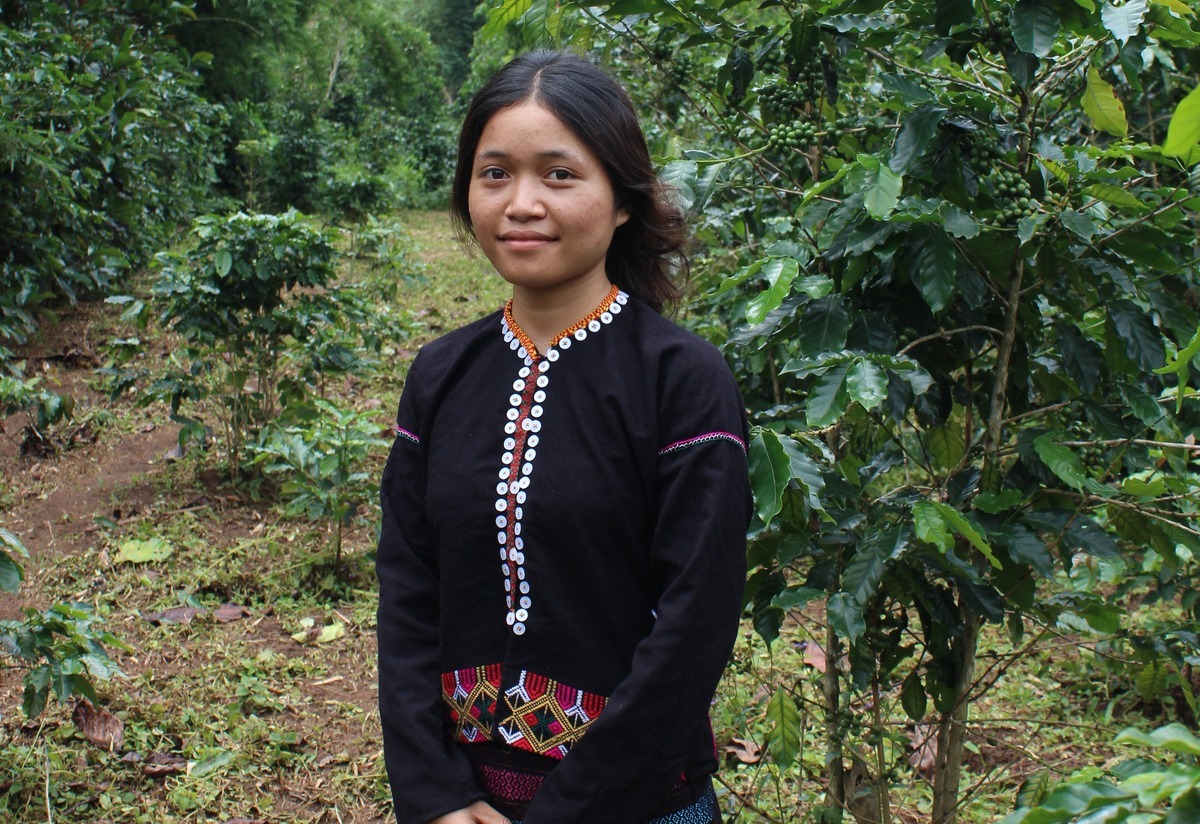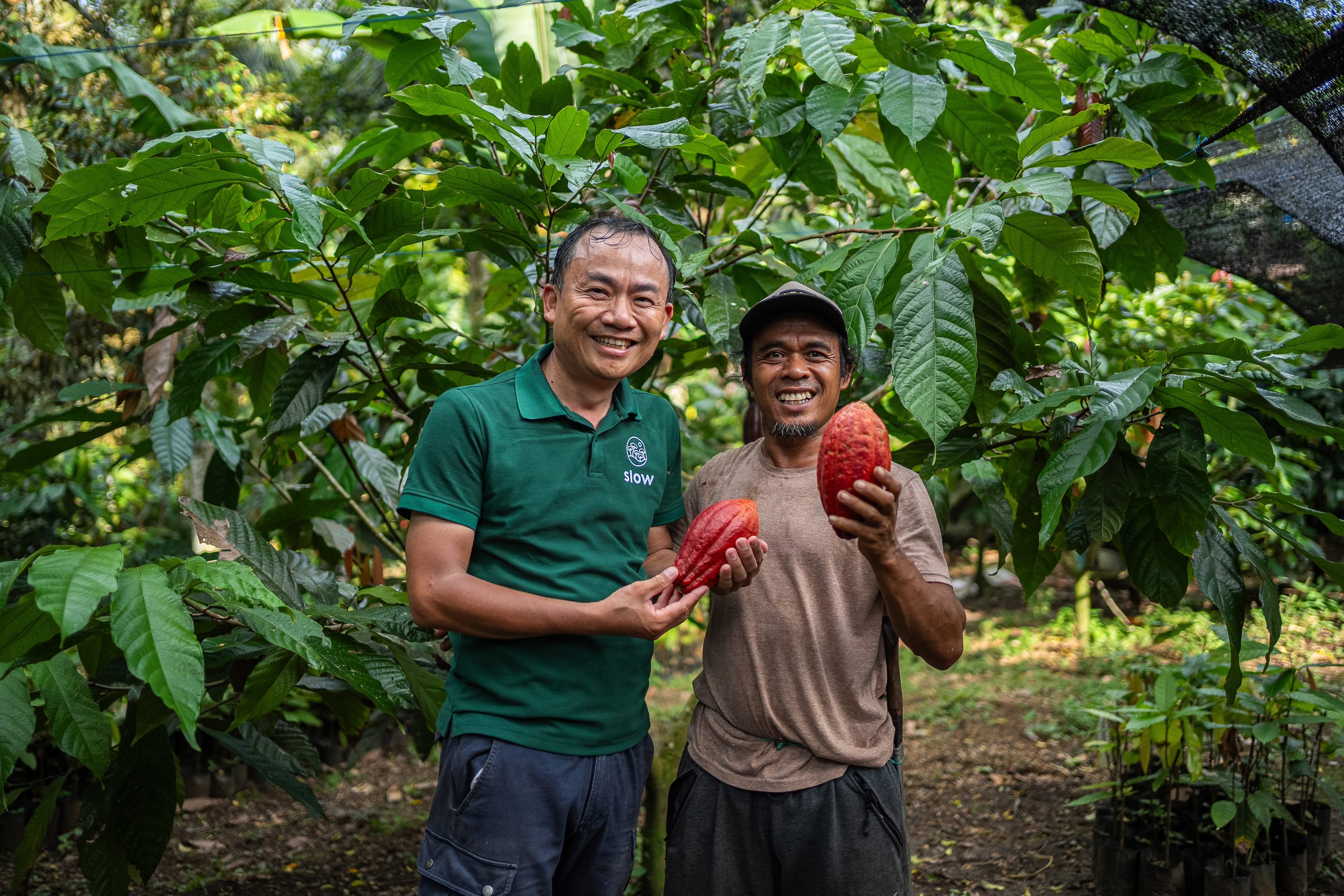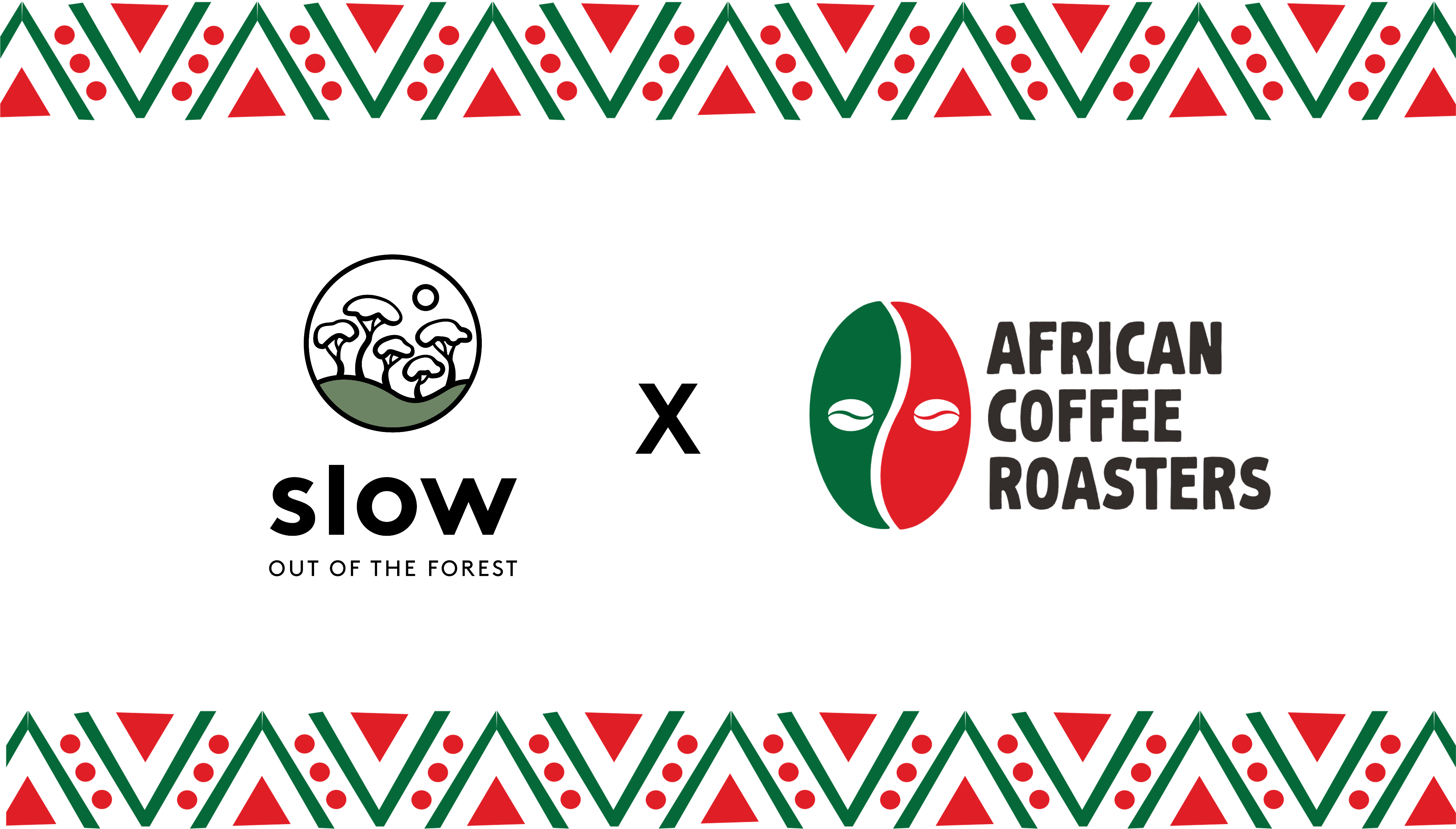What happens when coffee meets a forest?
Climate pressures are rising. In one Vietnamese coffee region, farmers are turning to agroforestry to secure yields, restore soils, and keep supply...

The key to producing high-quality coffee is the environment surrounding the coffee plants
The key to producing high-quality coffee is not just the location where the coffee grows but also the environment surrounding the coffee plants. Coffee plants in Laos are naturally grown in small plots owned by coffee farmers.
The trees, which grow naturally above the coffee bushes, protect the coffee from the sun. The forest improves the quality of coffee by slowing down the ripening of berries and providing them with nutrients as well as ideal growing soil.
Coffee beans harvested by Slow farmers are free from chemical fertilizers or pesticides – which means our coffee is completely organic.
Trees growing on plantations attract various animals and insects that help to maintain biodiversity at a healthy level. Having diverse wildlife in the plantation area helps in the successful growth of coffee trees and also provides organic pest control!
Tree Inventory helps to Analyze the Forest Slow’s commitment to conserve and protect forests involving an understanding of the current state of local forests in Laos.
For this, we asked for help from Sanni Torniainen, a master’s student in Forest Ecology at the University of Helsinki. Sanni has conducted a tree inventory in each of the coffee farms of 37 Slow farmers.

Data has been gathered on the number of trees in each farm, tree species, size, and canopy cover.
The tree inventory has helped provide valuable information about the general condition of the forests and the agroforestry system. Data has been also gathered on the number of trees in each farm, tree species, size, and canopy cover.
The more we know about the general condition of the forest and the individual tree species, the more certain we are to bring about permanent change.
That means using data to measure our progress, spot unforeseen developments, and help us accurately diagnose what actions are most beneficial to take and in which order. This is how we can create a sustainable plan to conserve and protect the Slow forests and help to regenerate other forests in the future.
In addition, we gain valuable insight into what potential crop-bearing trees may be planted alongside coffee to help generate more income for our farmers!

Climate pressures are rising. In one Vietnamese coffee region, farmers are turning to agroforestry to secure yields, restore soils, and keep supply...

Earth Day reminds us that change doesn't have to wait for sweeping policy or perfect systems. Often, it starts with something as simple—and as...

Big news from Slow. African Coffee Roasters is now part of the Slow family. And this isn’t just an acquisition—it’s a major step forward in how...